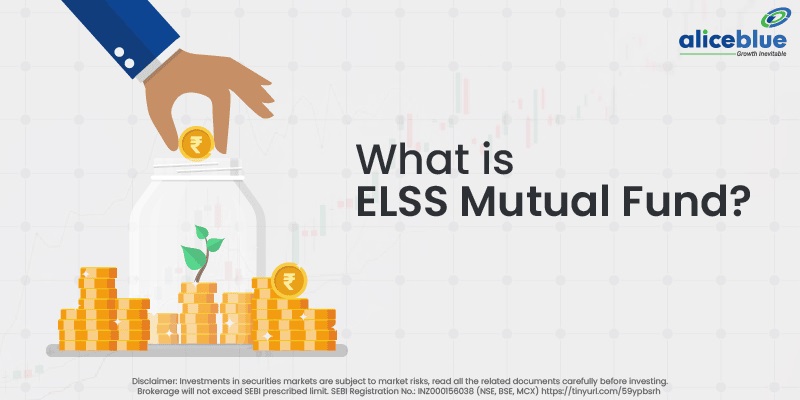ELSS, which stands for Equity Linked Saving Scheme, is a popular tax-saving investment option in India. It is a type of mutual fund that combines the benefits of equity investment and tax savings. In this article, we will provide an overview of ELSS mutual funds, discussing what they are, how they work, and their key features.
1. Understanding ELSS Mutual Funds
ELSS mutual funds are open-ended equity-oriented schemes offered by mutual fund companies. These funds primarily invest in equity and equity-related instruments, aiming to generate long-term capital appreciation for investors. ELSS funds are designed to provide tax benefits under Section 80C of the Income Tax Act, making them an attractive option for individuals looking to save taxes while investing in the stock market.
2. Tax Benefits of ELSS Mutual Funds
One of the main advantages of investing in ELSS funds is the tax benefits they offer. Here are the key tax advantages:
-
Tax Deduction: Investments in ELSS funds are eligible for deduction under Section 80C, up to a maximum limit of Rs. 1.5 lakh. This deduction reduces your taxable income, potentially resulting in significant tax savings.
-
Long-Term Capital Gains Tax: Gains from ELSS funds held for more than one year qualify for long-term capital gains tax rates. Currently, long-term capital gains on equity investments are tax-free up to Rs. 1 lakh per financial year. Any gains above this threshold are taxed at a flat rate of 10%.
3. Features and Characteristics
-
Lock-in Period: ELSS funds have a mandatory lock-in period of three years. During this period, investors cannot redeem or sell their units. The lock-in period promotes long-term investment discipline and aligns with the objective of generating wealth through equity investments.
-
Diversification: ELSS funds offer investors a diversified portfolio of stocks across different sectors and market capitalizations. This diversification helps reduce investment risks and provides exposure to various segments of the market.
-
Flexibility of Investment: ELSS funds allow investors to invest a lump sum amount or through Systematic Investment Plans (SIPs). SIPs provide the advantage of rupee-cost averaging, as investors can invest a fixed amount at regular intervals, regardless of market conditions.
4. Risk and Return Potential
It’s important to note that ELSS funds, like other equity investments, carry a certain level of risk. The performance of ELSS funds is subject to market fluctuations, and there is no guarantee of returns. However, historically, equity investments have the potential to deliver higher returns compared to other asset classes over the long term.
5. Comparison with Other Tax-Saving Instruments
When considering tax-saving options, it’s essential to compare ELSS funds with other available investment avenues, such as Public Provident Fund (PPF), National Savings Certificates (NSC), or tax-saving fixed deposits. ELSS funds offer the following advantages:
-
Potential for Higher Returns: ELSS funds have the potential to generate higher returns compared to traditional tax-saving instruments like PPF or NSC, as they invest in equities.
-
Shorter Lock-in Period: ELSS funds have a lock-in period of three years, which is relatively shorter compared to other tax-saving options like PPF, which has a lock-in period of 15 years.
-
Flexibility and Liquidity: ELSS funds offer the advantage of liquidity, as investors can redeem their investments after the completion of the lock-in period. This provides more flexibility compared to long-term instruments like PPF or NSC.
ELSS mutual funds offer individuals an opportunity to save taxes while participating in the potential growth of equity markets. By investing in ELSS funds, investors can enjoy the following benefits:
-
Tax Savings: ELSS funds provide tax deductions under Section 80C of the Income Tax Act, reducing your taxable income and resulting in potential tax savings.
-
Potential for Higher Returns: ELSS funds primarily invest in equities, offering the potential for higher returns compared to traditional tax-saving instruments.
-
Shorter Lock-in Period: ELSS funds have a lock-in period of three years, which is relatively shorter compared to other tax-saving options.
-
Diversification and Professional Management: ELSS funds are managed by experienced fund managers who build diversified portfolios, spreading the investment risk across different stocks and sectors.
However, it’s important to remember that investing in ELSS funds involves market risks. Past performance is not indicative of future results, and it’s advisable to consult with a financial advisor or tax professional before making investment decisions.
In summary, ELSS mutual funds provide individuals with a tax-efficient investment avenue that has the potential to deliver long-term capital appreciation. By understanding the basics of ELSS funds, considering their tax benefits, features, and risks, investors can make informed decisions to optimize their tax savings while pursuing their financial goals.
















